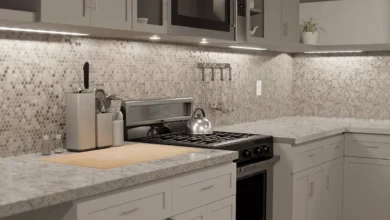Top 6 Scariest and Most Damaging Pests in Phoenix – Arizona
Pests are welcomed nowhere, and no one likes them. If anything, anyone might want with them is that they should be gone immediately. The thing is, some pests are not only scary because of their deadly and dominating appearance, but because they can cause some serious health issues and property damage.
As a matter of fact, pest control techs in Phoenix, Arizona are dealing with very scary and dangerous pests on a daily basis. However, since some of these pests are hard to handle, only a professional like Responsible Pest & Scorpion Control can take care of them. Keeping this in mind, it is best to know and recognize some worse pests found in the Phoenix area.
Here we have made a list of top 6 scariest pests in Phoenix. If you find them anywhere in your house or even in the front or back yard, it is best to call a pest control company.
- Termites
Termites are like one of the most destructive pests. They can destroy all your wooden furniture in a small span of time, and thereby cause significant damage.
- Bed Bugs
Bed bugs, as we all know, travel from one place to another very easily. This is the reason why most homes and offices in Arizona have them. Their bites are not deadly, but they are truly annoying. Also, if your home is infected with them, be prepared to have sleepless nights.
- Cockroaches
For many, cockroaches are not scary, however, when we talk about cockroaches in Arizona, they are. The thing is, they can carry harmful diseases, and thus are dangerous for anyone’s health. Above all, it is very difficult to get rid of them.
- Rodents
Many think that pests are basically small insects, but rodents in Arizona are equally frustrating. Some of the common rodents found in residential areas are – rats, mice, and gophers. These pests can scare and annoy you, as well as cause damage to your property. When dealing with them, make sure to call in professional pest techs.
- Spiders
There are many different species of spiders found in Arizona. Most of them are terrifying and dangerous, but the Black Widow spiders are the deadliest ones. If you ever get bitten by them, get medical attention immediately, because in severe cases it may cause death.
- Scorpions
Finding scorpions is something very common in the Phoenix area, especially the bark scorpions which can potentially cause serious damage. Getting stung by one can cause such health issues that you will have to get admitted in the hospital. It is possible to control them, but of course only with the help of professionals.
Individuals who got stung by bark scorpions report that they experience the following discomforts:
- Sweating
- Drooling
- Nausea and vomiting
- Difficulty breathing
- Muscle twitching
- Hypertension
- Tachycardia or Arrhythmia
- Restlessness
- Inconsolable crying in children
For sure, by now you understand how damaging pests can be for both – your property and your health. So, if you are residing in the Phoenix area, and are dealing with pest issues, wait no longer and contact responsiblepestcontrol.net today.




